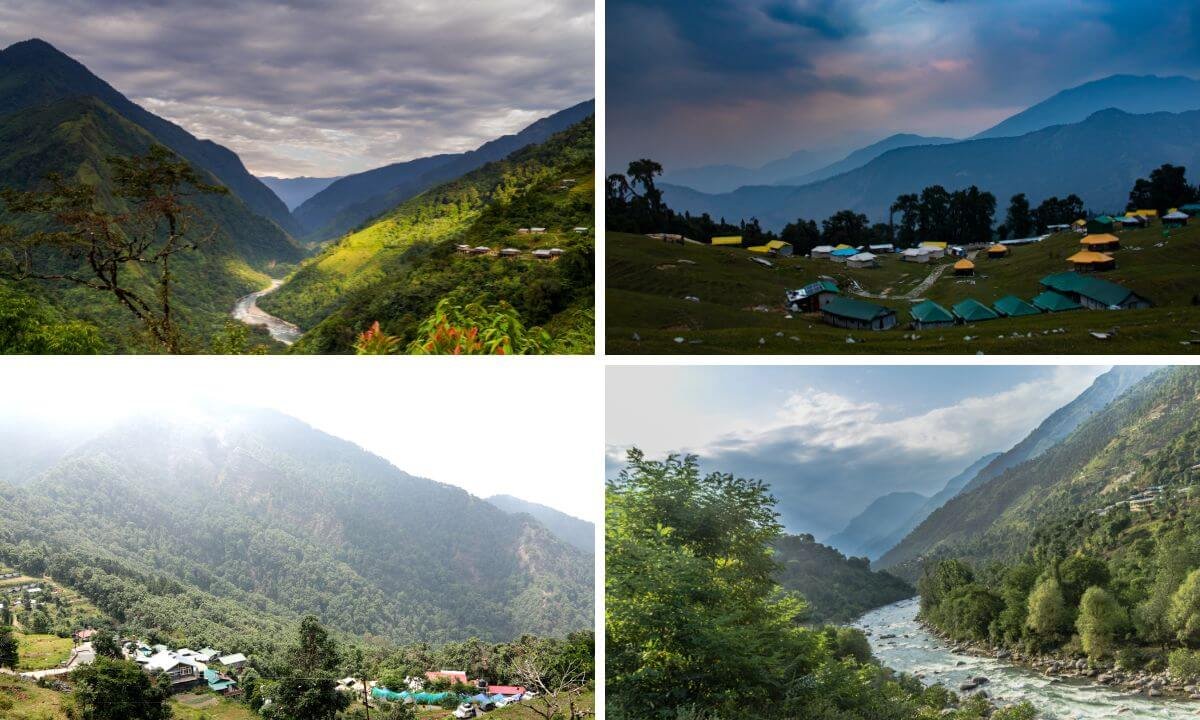10 Hidden Gems in India You Must Visit Before They Become Popular
If you’re on the hunt for hidden gems in India, you’re in for a treat. India is a treasure trove of unexplored places, each offering a unique blend of natural beauty, cultural richness, and offbeat adventure. While the famous tourist spots often steal the limelight, there are countless offbeat travel India destinations that remain untouched by the crowds. In this article, we unveil ten such hidden gems in India you must visit before they become popular. Pack your bags and get ready to discover the unexplored!
1. Mechuka, Arunachal Pradesh
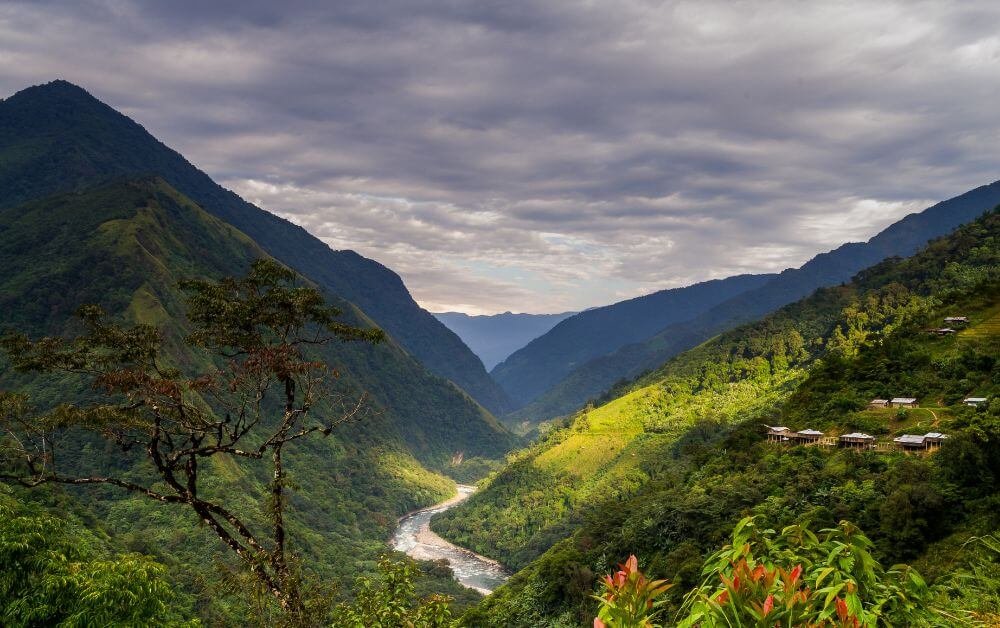
Nestled in the Eastern Himalayas, Mechuka is a serene valley that feels worlds away from the chaos of city life. Surrounded by snow-capped peaks and lush forests, this unexplored place in India is home to the 400-year-old Samten Yongcha Monastery and the tranquil Siang River. The valley’s vibrant culture, traditional wooden houses, and friendly locals make it a perfect destination for those seeking authentic experiences. Visit between October and April for the best weather and clear mountain views.
Best Time: October to March
This period offers pleasant weather with clear skies, vibrant autumn colors, and snow-covered winters. Temperatures range from 0°C to 20°C, ideal for trekking, cultural experiences, and adventure activities
2. Tirthan Valley, Himachal Pradesh

Tirthan Valley is a pristine paradise tucked away in the Kullu district, far from the touristy bustle of Manali or Shimla. Named after the crystal-clear Tirthan River, this offbeat travel India spot is ideal for fishing, trekking, and wildlife watching. The valley is also the gateway to the Great Himalayan National Park, a UNESCO World Heritage Site, making it a haven for nature lovers and adventure seekers alike.
Best Time: March to June and September to November
Spring and early summer bring blooming flowers and lush greenery, while autumn offers crisp, cool air and fewer crowds. Avoid the winter months if you’re concerned about snow-blocked roads
3. Chopta, Uttarakhand
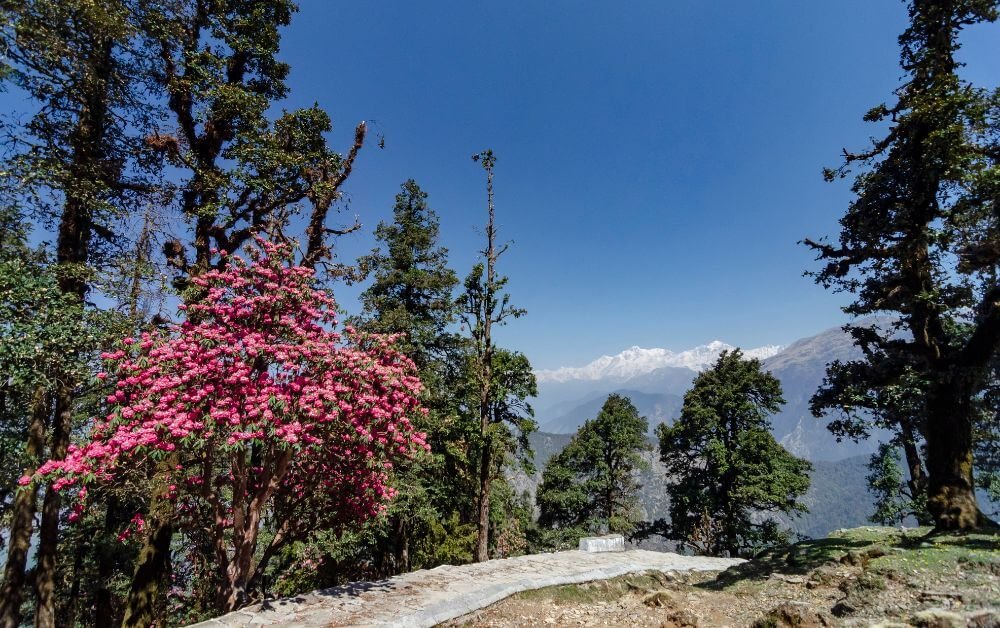
Often called the ‘Mini Switzerland of India,’ Chopta is a lush green meadow surrounded by towering Himalayan peaks. It serves as the starting point for treks to Tungnath-the world’s highest Shiva temple-and Chandrashila Peak, which offers panoramic views of the snow-clad Himalayas. Despite its breathtaking beauty, Chopta remains one of the most unexplored places in India, perfect for trekkers and solitude seekers.
Best Time: March to May
Enjoy moderate temperatures (8–15°C), clear mountain views, and ideal trekking conditions. Winters (October to February) are very cold and best avoided unless you’re prepared for freezing temperatures
4. Ziro Valley, Arunachal Pradesh
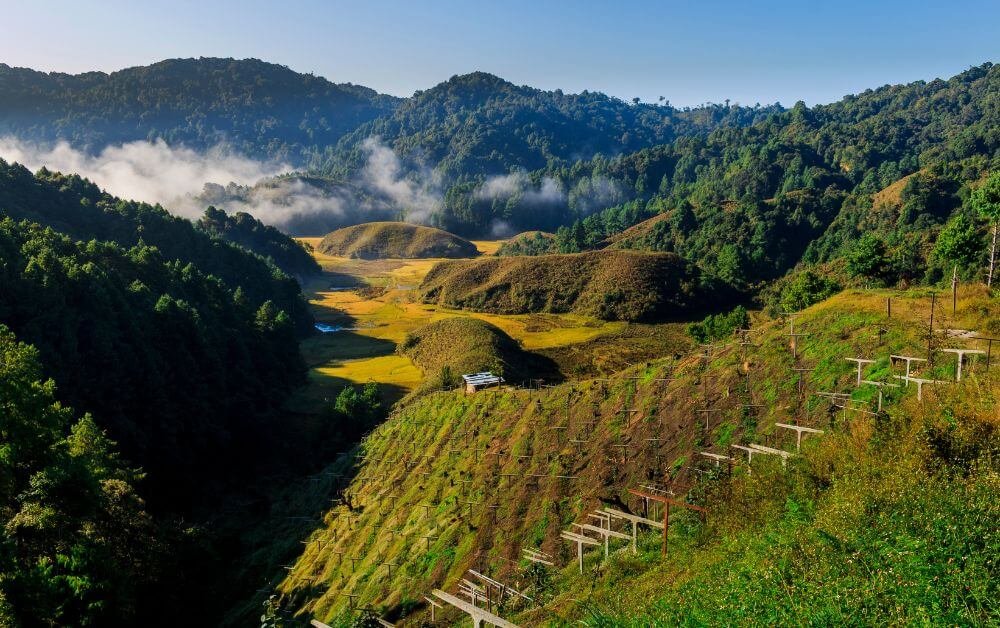
Ziro Valley is a UNESCO World Heritage Site celebrated for its rolling paddy fields, pine-clad hills, and the unique culture of the Apatani tribe. The valley comes alive during the Ziro Music Festival, but even outside the festival, its tranquil landscapes and sustainable tribal traditions make it a must-visit hidden gem in India. The best time to visit is from September to November or March to May.
Best Time: March to October
Summer is cool and picturesque, perfect for trekking and outdoor activities. Monsoon (July–September) brings enchanting waterfalls but may limit some activities. Winters can be extremely cold, with temperatures dipping as low as -13°C
5. Pangot, Uttarakhand
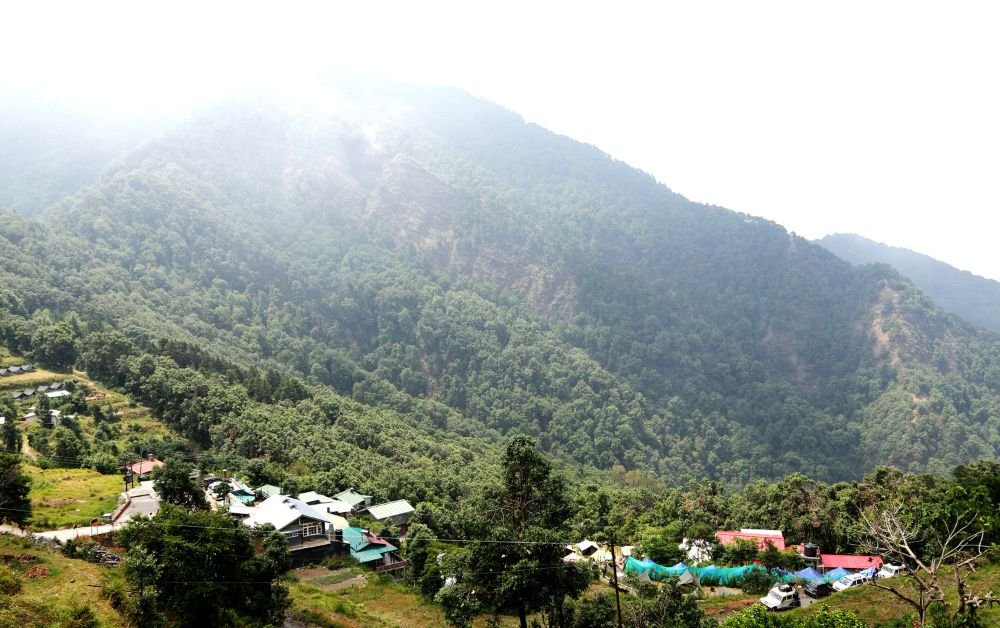
Just 15 kilometers from Nainital, Pangot is a birdwatcher’s paradise with over 500 species of birds. This quaint village is surrounded by thick oak and pine forests, offering peaceful trails and stunning mountain vistas. Pangot’s untouched charm and abundant wildlife make it a perfect escape for nature lovers looking for offbeat travel India experiences.
Best Time: March to June
Summer is the best season for birdwatching and enjoying the sanctuary’s scenic beauty. Winters are romantic but chilly, while the monsoon brings lush landscapes but can hinder outdoor plans
6. Mandawa, Rajasthan

While Rajasthan is famous for its majestic forts and palaces, Mandawa in the Shekhawati region stands out as an open-air art gallery. The town is adorned with elaborately painted havelis featuring intricate frescoes that tell tales of a bygone era. Mandawa is a delight for art enthusiasts and history buffs who want to explore Rajasthan’s lesser-known cultural heritage.
Best Time: October to March
Winter is the most pleasant time, with temperatures between 5°C and 20°C-perfect for exploring Mandawa’s frescoed havelis and open-air art galleries. Summers are extremely hot and best avoided
7. Gokarna’s Hidden Beaches, Karnataka

Gokarna is often seen as a quieter alternative to Goa, but its true charm lies in its hidden beaches-Paradise Beach and Half Moon Beach. These secluded spots are accessible only via short treks or boat rides, offering pristine sands, turquoise waters, and a sense of solitude that’s hard to find elsewhere. Gokarna’s hidden beaches are the ultimate offbeat travel India destination for beach lovers.
Best Time: November to February
These winter months offer clear skies and comfortable temperatures (14°C to 32°C), ideal for beach activities and exploring coastal trails. Avoid the monsoon (June–August) for beach outings, as heavy rains can disrupt travel
8. Halebidu, Karnataka
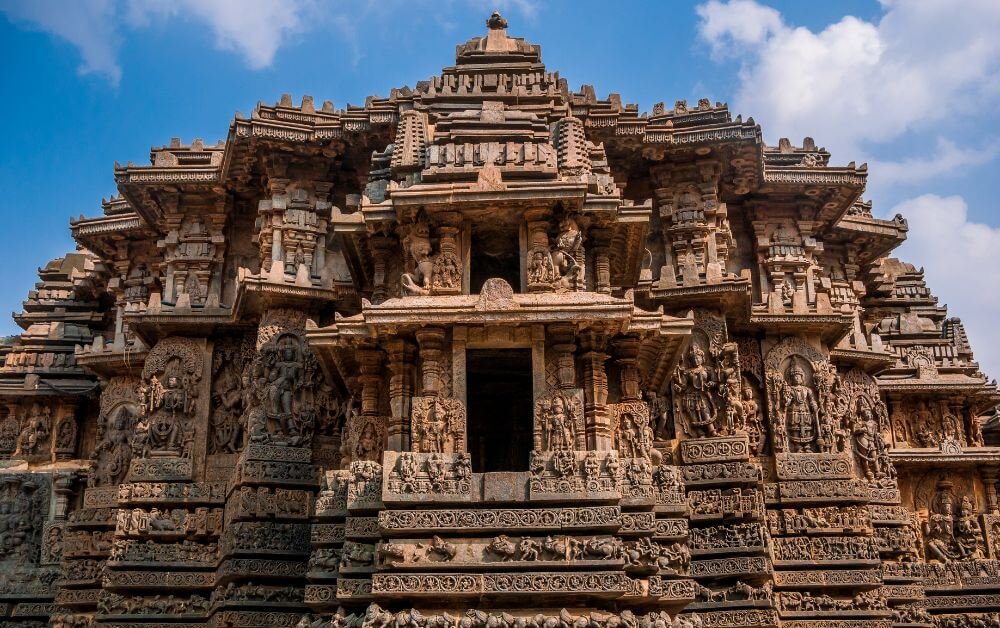
Halebidu, once the capital of the Hoysala dynasty, is renowned for its intricately carved temples and rich architectural heritage. The Hoysaleswara Temple, with its detailed stone sculptures depicting mythological tales, is a masterpiece that rivals more popular sites but without the crowds. Halebidu’s serene ambiance and historical significance make it a top unexplored place in India for history enthusiasts.
Best Time: October to March
Enjoy pleasant weather (22°C to 31°C) perfect for exploring the ancient temples and architectural wonders. Summers can be hot, and monsoon rains may affect travel plans
9. Mainpat, Chhattisgarh
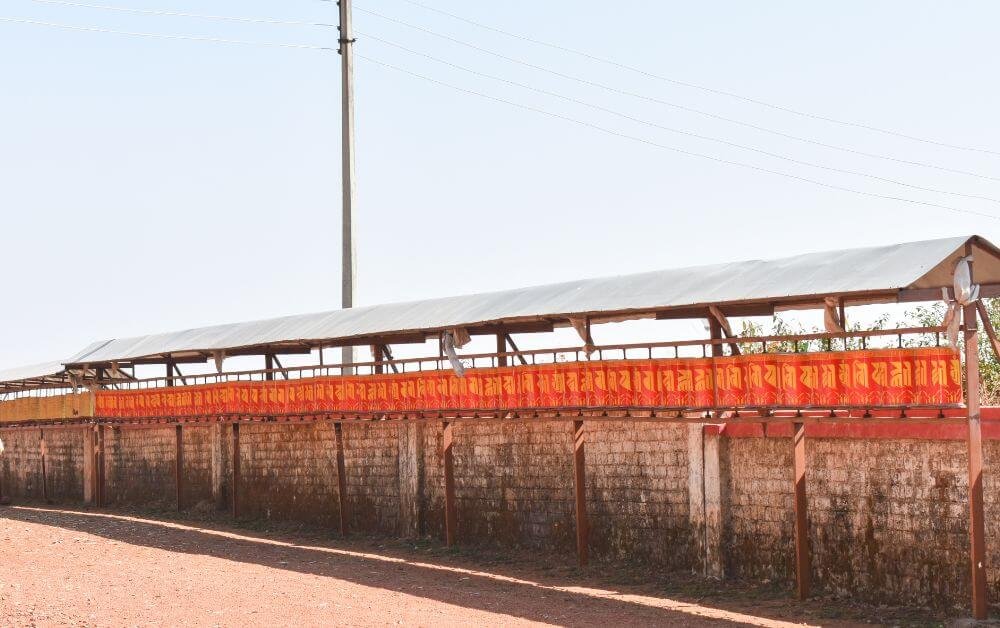
Often referred to as the ‘Shimla of Chhattisgarh,’ Mainpat is a hidden hill station with rolling meadows, dense forests, and cascading waterfalls. It’s also home to a vibrant Tibetan settlement, adding a unique cultural flavor to the region. Mainpat is perfect for those seeking tranquility, scenic beauty, and a taste of Tibetan culture in central India.
Best Time: November to March
Winter offers cool, comfortable temperatures (8°C to 15°C), making it perfect for trekking, sightseeing, and adventure sports. Summers are hot, while the monsoon (July–October) brings pleasant weather and lush waterfalls
10. Majuli, Assam
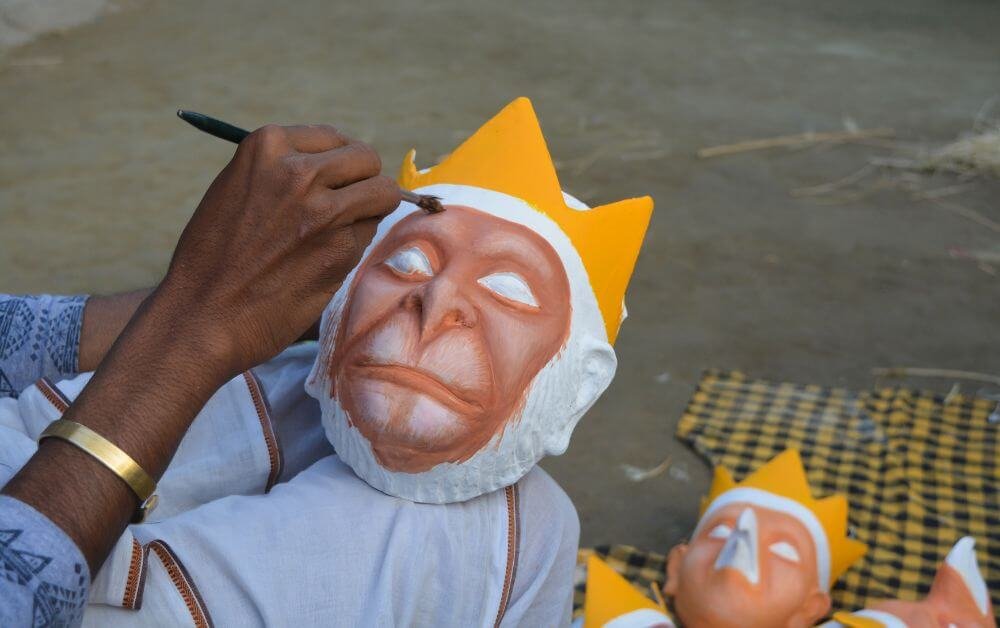
Majuli is the world’s largest river island, situated on the Brahmaputra River in Assam. This ecological wonder is known for its lush landscapes, vibrant Vaishnavite culture, and unique satras (monasteries). Majuli’s annual Raas festival and traditional mask-making workshops offer a glimpse into Assam’s rich heritage, making it a must-visit hidden gem in India before it becomes a mainstream destination.
Best Time: October to March
Experience cool, comfortable weather (10°C to 25°C) ideal for ferry rides, cycling, and exploring the island’s unique culture. Post-monsoon freshness adds to the island’s charm, while summers and monsoons are best avoided due to heat and flooding risks
Why Visit These Hidden Gems in India?
India’s offbeat destinations offer more than just scenic beauty-they promise authentic cultural encounters, adventure, and a chance to reconnect with nature. These unexplored places in India are perfect for travelers who crave solitude, discovery, and the thrill of venturing where few have gone before.
Tips for Exploring Offbeat Travel India Cities
- Travel Responsibly: Respect local customs, carry your trash back, and support local businesses.
- Plan Ahead: Many hidden gems have limited accommodation and transport options, so book in advance.
- Stay Flexible: Offbeat places may have unpredictable weather and basic amenities-embrace the adventure!
- Engage Locals: Learn from the people who call these places home; their stories will enrich your journey.
How Accessibility of Hidden Gems in India Changes With the Seasons
The accessibility of hidden gems in India-those unexplored places that define offbeat travel in India-varies greatly with the changing seasons. Weather, road conditions, and local events all play a role in how easy (or challenging) it is to reach and enjoy these destinations.
Monsoon (July–September): Lush Beauty, Difficult Roads
- Pros: Many hidden gems, especially in the Northeast and Western Ghats, are transformed into lush paradises with vibrant greenery and waterfalls at their peak. Places like Cherrapunji, Mawsynram, and Coorg are particularly magical during this time.
- Cons: Heavy rainfall can lead to landslides, flooded roads, and slippery trekking trails, making travel risky and sometimes even impossible. Northeast India, for example, is best avoided during peak monsoon for travel, even though it is visually stunning. Access to remote villages and hill stations may be cut off temporarily due to road blockages.
- Tips: If you do travel during monsoon, pack waterproof gear, sturdy shoes, and check local weather and road conditions daily.
Post-Monsoon/Autumn (October–November): Fresh, Green, and Accessible
- Pros: October is one of the best months for offbeat travel in India. The monsoon rains have subsided, leaving behind fresh greenery, cool breezes, and pleasant weather. Roads are generally cleared, and outdoor activities become easier and safer. Cities like Ziro in Arunachal Pradesh and Spiti Valley in Himachal Pradesh become accessible and more enjoyable.
- Cons: Some remote areas may still have residual road damage from the monsoon, but most tourist infrastructure is operational.
- Tips: This is an ideal time for trekking, cultural experiences, and exploring nature reserves.
Winter (December–February): Crisp Air, Some Remote Spots Challenging
- Pros: Many hidden gems, especially in the plains and low hills (like Majuli in Assam, Mandawa in Rajasthan, and Tirthan Valley in Himachal), are at their most comfortable and picturesque. Winter brings clear skies and vibrant festivals.
- Cons: High-altitude or Himalayan destinations (such as Spiti Valley, Chopta, and Mechuka) can become difficult or even inaccessible due to snow and freezing temperatures. Roads may be blocked, and transport services can be limited. Only experienced travelers prepared for harsh conditions should attempt these journeys.
- Tips: Always check weather forecasts, carry appropriate winter gear, and confirm road and accommodation availability before setting out.
Summer (March–June): Best for High Altitudes, Hot in the Plains
- Pros: Summer is perfect for visiting high-altitude hidden gems like Chopta, Pangot, and Ziro, which remain cool and accessible while the plains heat up3. Trekking routes are open, and wildlife sanctuaries are teeming with activity.
- Cons: Lower-altitude destinations in central and southern India can become uncomfortably hot, and water shortages may affect some rural areas.
- Tips: Book accommodations in advance and carry sun protection for outdoor activities.
Key Takeaways
- Monsoon brings natural beauty but can hinder access to remote or mountainous hidden gems in India due to weather-related disruptions.
- Post-monsoon and autumn offer the best balance of accessibility, comfort, and scenery for most unexplored places in India.
- Winter is ideal for cultural and low-altitude destinations, but Himalayan gems may be cut off by snow.
- Summer is the season to explore hill stations and northern offbeat travel India spots, while the plains should generally be avoided due to heat.
Plan your trip according to the season and always check local weather and road reports to ensure a safe and enjoyable journey to India’s hidden gems.
Conclusion
From the misty valleys of Arunachal Pradesh to the sun-kissed beaches of Karnataka, these hidden gems in India are waiting to be discovered. Whether you’re an adventure junkie, a culture buff, or a seeker of peace, the unexplored places in India promise experiences you’ll cherish forever. Visit them now-before the rest of the world catches on!

